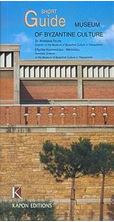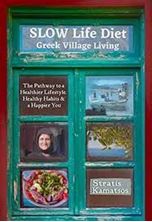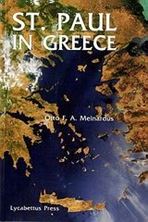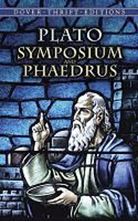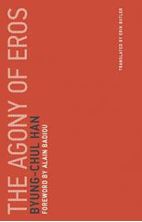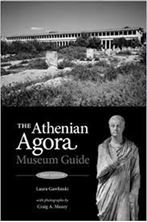Votre panier est vide.
Grèce
Short Guide Museum of Byzantine Culture
The Short Guide to the Museum of Byzantine Culture is a convenient handbook for visitors who wish to form a concise yet authoritative picture of the permanent exhibition in the Museum. The “Short Guide” will accompany visitors during their visit to the Museum galleries, and will keep their image of the exhibits alive long afterwards.
από
12,72 €
11,40 €
SLOW Life Diet : Greek Village Living
Ever wonder why people in Greek villages live past their 90s? Is it good genes or luck? I’ll let you in a little secret…it’s neither. It’s their slow living lifestyle. Living long and having a healthy lifestyle is a way of life in the Greek villages.
από
10,60 €
9,54 €
St. Paul in Greece
Otto F. A. Meinardus's "St. Paul in Greece" has been the fundamental source about St. Paul's travels in Greece for modern visitors to the country for many years, providing clear biblical and cultural insight into all the sites St. Paul visited in Greece, from Philippi to Fair Havens. It also discusses St. Paul's correspondence with the new Christian communities he started and the traditions that continue in these communities today. This edition, with new photographs and maps, has been brought up to date to take account of the changes at some of the sites since the original text was written.
10,60 €
Symposium and Phaedrus
Two important dialogues offer crucial insights into mystical and aesthetic aspects of Platonic doctrine. Symposium attempts to find the ultimate manifestation of the love that controls the world, leading to mystic union with eternal and supercosmic beauty. Phaedrus discusses the psychology of love, resulting in the concept of the familiar Platonic "forms" as objects of transcendental emotion.
10,20 €
The Acropolis through its Museum
Το βιβλίο "Η Ακρόπολη μέσα από το Μουσείο της" δεν είναι ένας απλός οδηγός μουσείου. Παρουσιάζοντας τα έργα τέχνης που εκτίθενται στο μουσείο, προσπαθεί να ανασυνθέσει την ιστορία του ιερού βράχου ως μέρος του πολιτιστικού και του ευρύτερου ιστορικού γίγνεσθαι της αρχαίας Αθήνας. Το βιβλίο ακολουθεί την πορεία του επισκέπτη στο μουσείο, ώστε να μπορεί κάποιος να μελετήσει και να διαβάσει για τα αρχαία που εκτίθενται μπροστά του. Είναι όμως έτσι γραμμένο ώστε και με αυτόνομη μελέτη να έχει τη δυνατότητα ο αναγνώστης να προσεγγίσει τα θέματα βαθύτερα και να κατανοήσει τις προϋποθέσεις - πολιτικές, κοινωνικές, οικονομικές, ιδεολογικές, καλλιτεχνικές και τεχνολογικές - που οδήγησαν στα μοναδικά έργα της Ακρόπολης.
Το βιβλίο περιέχει πλουσιότατη εικονογράφηση με φωτογραφίες αλλά και πολλά σχέδια και αναπαραστάσεις, που δίνουν τη δυνατότητα να γίνουν κατανοητά τα αποσπασματικά σωζόμενα έργα το καθένα στο πλαίσιό του. Επίσης το βιβλίο απαντά σε πολλά από τα ερωτήματα που γεννιούνται στους αναγνώστες αλλά και σε όλους τους υποψιασμένους αρχαιόφιλους, όπως π.χ. πόσο ήταν το μέγεθος της αρχαίας Αθήνας και πόσος ο πληθυσμός της, τι σήμαιναν τα θηρία στα μεγάλα αρχαϊκά αετώματα, τι αντιπροσώπευαν τα αγάλματα των Κορών, γιατί το Ερεχθείο έγινε τόσο σύνθετο και ποιος ο ρόλος των Καρυατύδων, γιατί ο ναός της Αθηνάς Νίκης έγινε ιωνικός, τι οδήγησε τον Περικλή και τους συμβούλους του στην επιλογή του συγκεκριμένου οικοδομικού προγράμματος και πώς χρηματοδοτήθηκαν τα μεγάλα έργα, γιατί αποφάσισαν να τοποθετήσουν ιωνική ζωφόρο στον δωρικό Παρθενώνα, ποια πολιτικά μηνύματα έστελναν προς τη Σπάρτη μέσα από τον γλυπτό διάκοσμο του Παρθενώνα κ.ά.
από
29,36 €
23,50 €
The Acropolis. The Acropolis museum
A small, sun-drenched plain with a precipitous rock at its centre, a broad platform at its peak and valuable springs with drinking waters at its foot. The people of the prehistoric era could not have ignored such an advantageous site. And indeed, excavations at the top and the slopes of the Acropolis have revealed traces of settlement dating from the late Neolithic period (ca 3500-3200 BC).This habitation continued over the following periods, the Early Bronze Age (3200/3000-2200/2000 BC) and the Middle Bronze Age (2200/2000-1600 BC). In the second millennium BC the population of Attica was reinforced. A new tribe, the lonians, arrived from the north and merged with the indigenous population, which tradition holds were the Pelasgians. From around the middle of the same millennium a brilliant prehistoric civilisation started to flourish on mainland Greece, the Mycenaean civilisation which took its name from its most important centre, the town of Mycenae. During the Mycenaean period (1600-1100 BC) the inhabitants of the Acropolis lived in groups on the slopes and at the peak of the rock. They worshipped their ancient goddess Athena here, on the top of the Acropolis hill, where the palace of the local king also stood. (...)
από
10,00 €
8,00 €
The Agony of Eros
An argument that love requires the courage to accept self-negation for the sake of discovering the Other. Byung-Chul Han is one of the most widely read philosophers in Europe today, a member of the new generation of German thinkers that includes Markus Gabriel and Armen Avanessian. In The Agony of Eros, a bestseller in Germany, Han considers the threat to love and desire in today's society.
For Han, love requires the courage to accept self-negation for the sake of discovering the Other. In a world of fetishized individualism and technologically mediated social interaction, it is the Other that is eradicated, not the self. In today's increasingly narcissistic society, we have come to look for love and desire within the "inferno of the same." Han offers a survey of the threats to Eros, drawing on a wide range of sources-Lars von Trier's film Melancholia, Wagner's Tristan und Isolde,Fifty Shades of Grey, Michel Foucault (providing a scathing critique of Foucault's valorization of power), Martin Buber, Hegel, Baudrillard, Flaubert, Barthes, Plato, and others.
Han considers the "pornographication" of society, and shows how pornography profanes eros; addresses capitalism's leveling of essential differences; and discusses the politics of eros in today's "burnout society." To be dead to love, Han argues, is to be dead to thought itself. Concise in its expression but unsparing in its insight, The Agony of Eros is an important and provocative entry in Han's ongoing analysis of contemporary society. This remarkable essay, an intellectual experience of the first order, affords one of the best ways to gain full awareness of and join in one of the most pressing struggles of the day: the defense, that is to say-as Rimbaud desired it-the "reinvention" of love.
-from the foreword by Alain Badiou
17,50 €
The Ancient Guide to Modern Life
It's time for us to re-examine the past. Our lives are infinitely richer if we take the time to look at what the Greeks and Romans have given us in politics and law, religion and philosophy and education, and to learn how people really lived in Athens, Rome, Sparta and Alexandria. This is a book with a serious point to make but the author isn't simply a classicist but a comedian and broadcaster who has made television and radio documentaries about humour, education and Dorothy Parker. This is a book for us all.
12,50 €
The Athenian Agora: Museum Guide (5th Ed.)
Written for the general visitor, the Athenian Agora Museum Guide is a companion to the 2010 edition of the Athenian Agora Site Guide and leads the reader through all of the display spaces within the Stoa of Attalos in the Athenian Agora.
17,90 €
The Athenian Constitution
13,70 €
Trier par:
Tout Effacer
Min:
0 €
Max:
91 €
€0
€91


